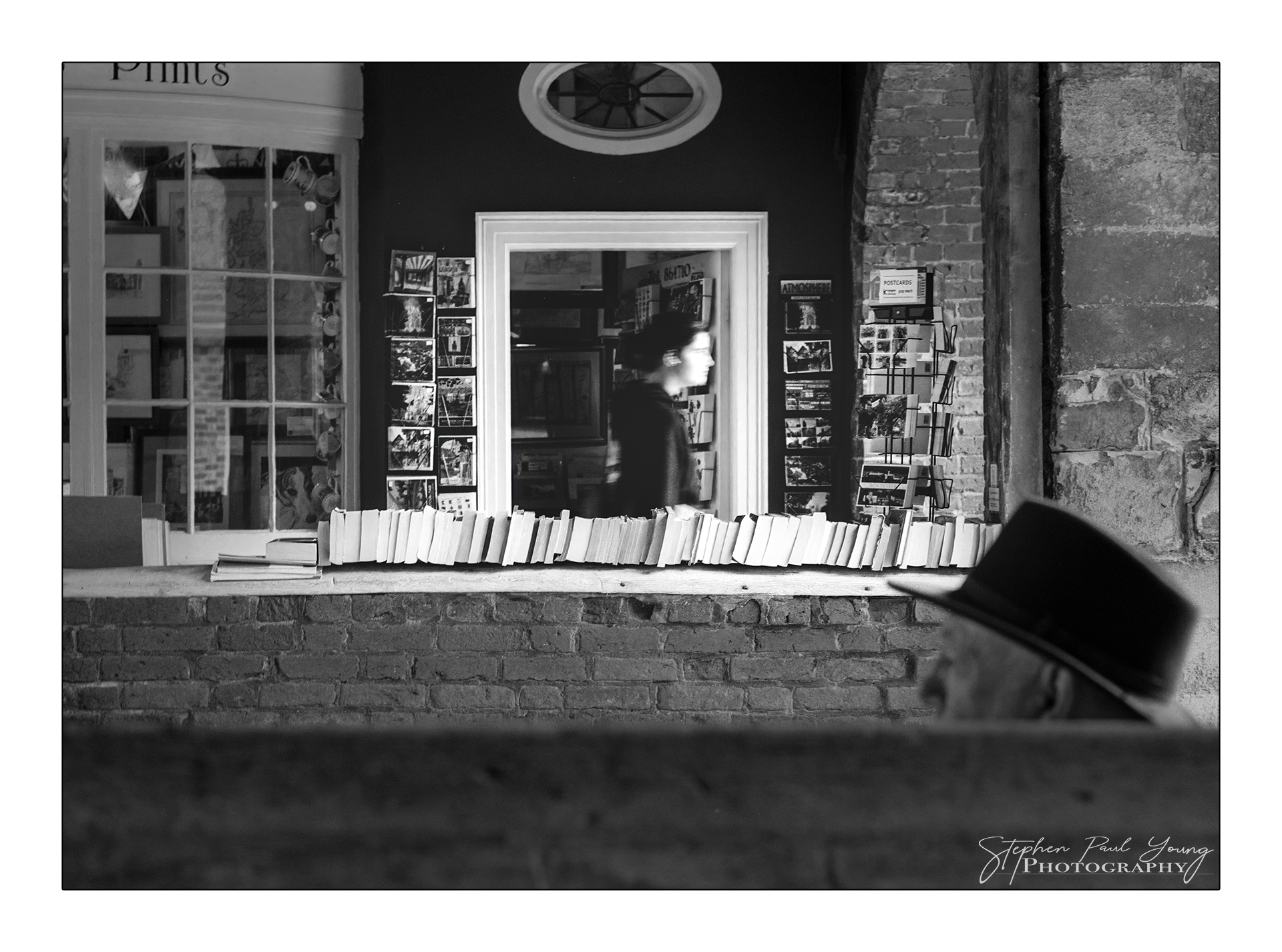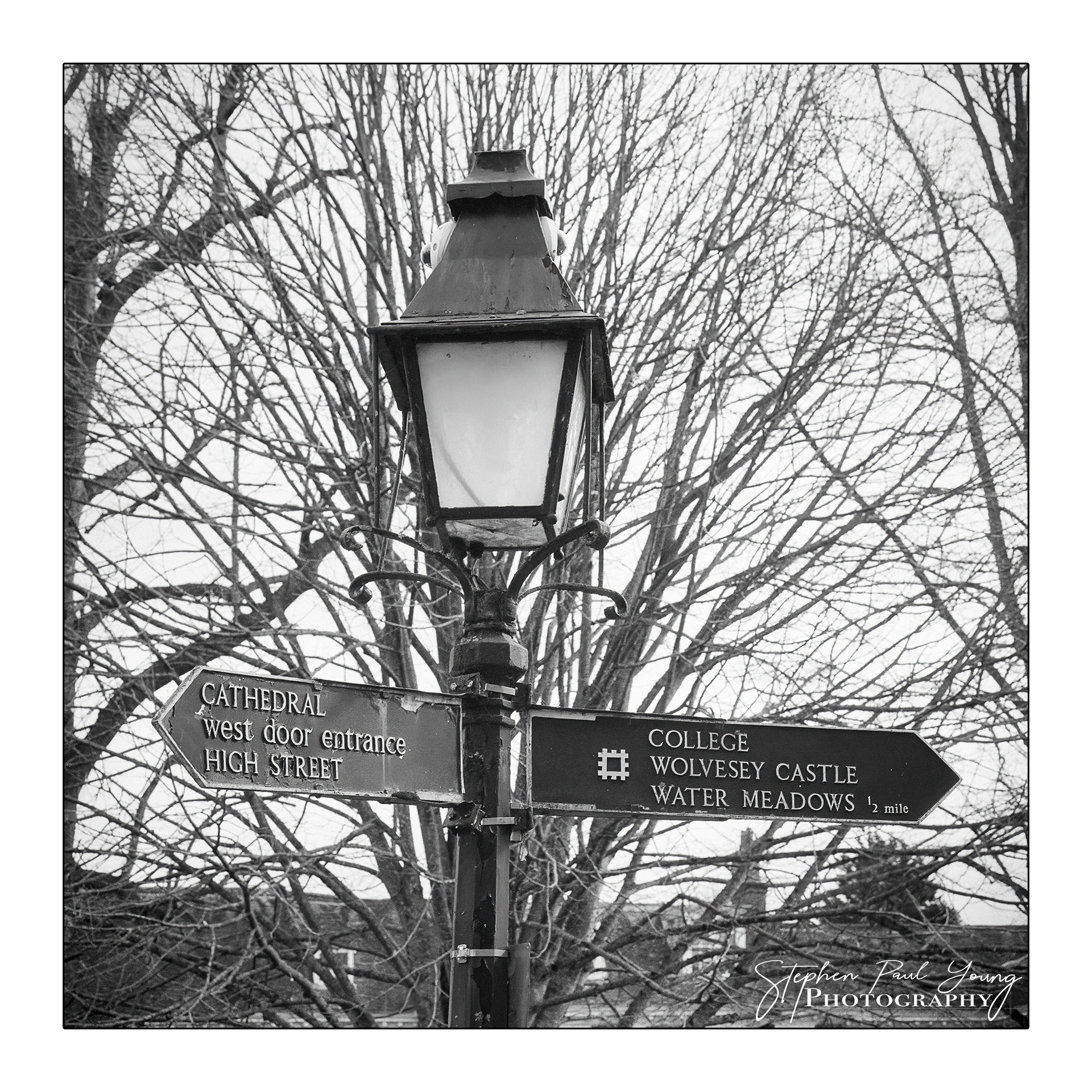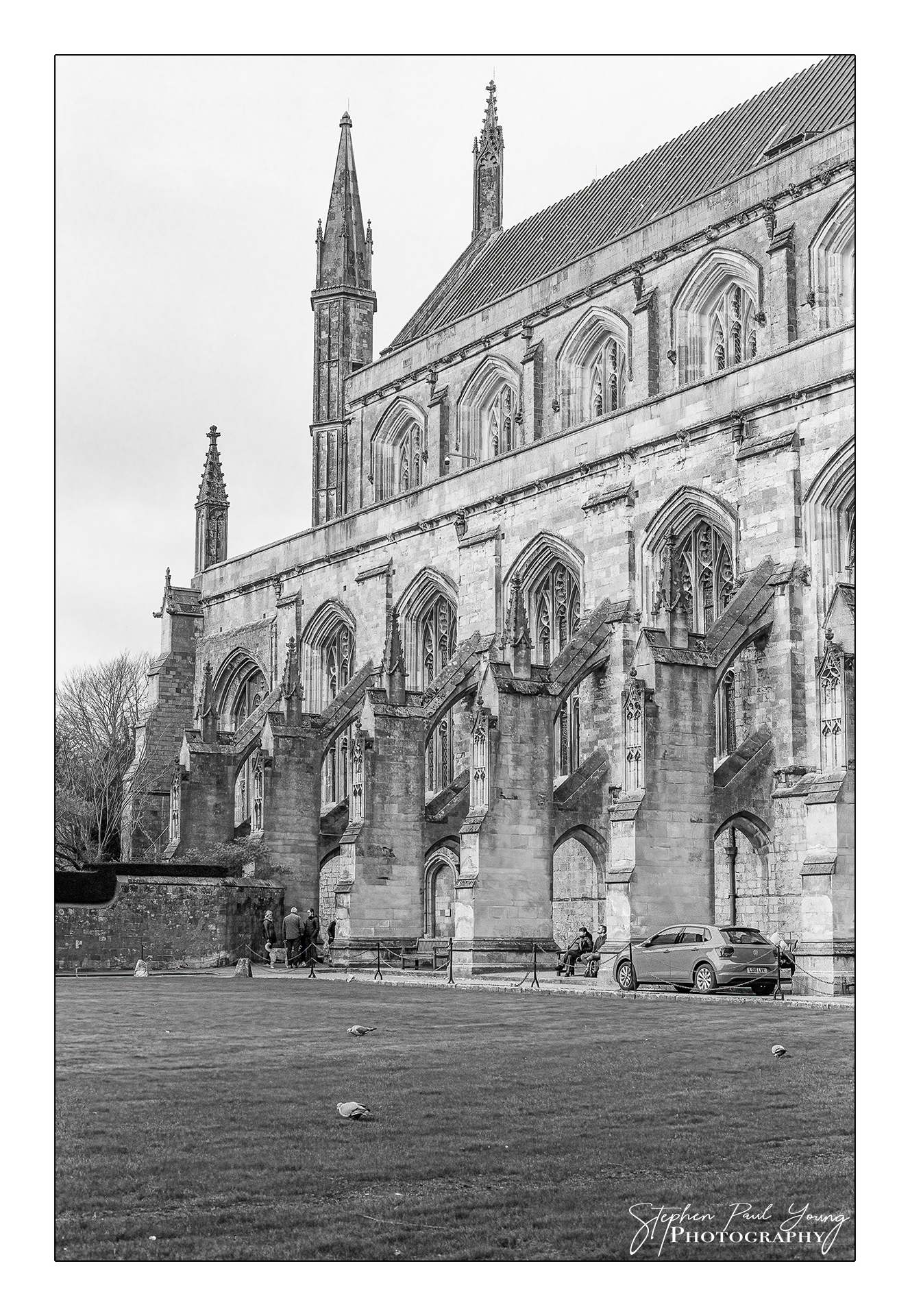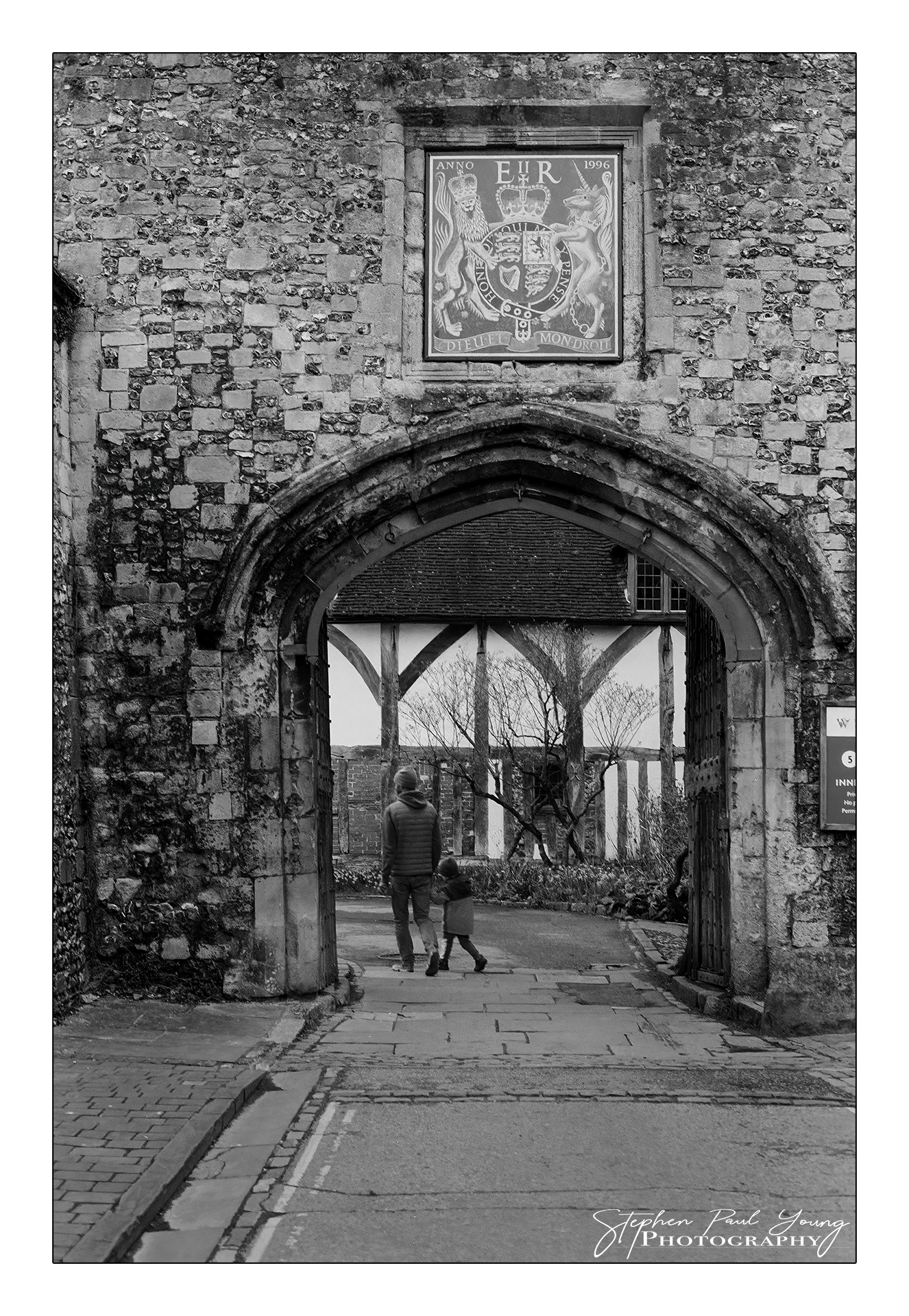Capturing 35mm Urban Photography Landscapes with 35mm Film
Introduction
Hey there, fellow photography enthusiasts! I want to take a moment to share a personal adventure that sparked my deep love for 35mm urban photography and how it led me on an exciting journey through captivating cities like Winchester, Scotland, and Hungerford. Grab a cup of coffee and join me as I unfold the enchantment of capturing the essence of these places through the vintage charm of a 35mm film camera, my old faithful Canon AE-1 Program..
There’s something I’ve found that’s truly magical about urban photography. It’s like stepping into a different world, where every corner holds a unique story waiting to be told. And what better way to preserve these tales than with the timeless artistry of film photography? That’s the purpose of this article—to not only share my own experiences but also provide you with valuable insights and tips on exploring urban landscapes with your trusty 35mm film camera.
For me, it all started with a curiosity to uncover the hidden treasures within any concrete jungle. Armed with my beloved film camera, I embarked on a series of trips and days out, capturing the soul of each place I visited. The allure of these urban landscapes, with their bustling streets, iconic architecture, and vibrant cultures, enticed me to dive deeper and capture their essence through the lens of my film camera.
With each click of the shutter, I discovered a sense of connection and storytelling that I couldn’t find elsewhere. The raw and organic feel of film photography added an extra layer of authenticity to my images, transporting me back to the moment I pressed that shutter button. There’s an unmistakable charm in the grain, the dynamic range, and the subtle imperfections that make each photograph truly unique.
Through this article, I hope to share my passion and offer you a glimpse into the wonders of urban photography with a 35mm film camera. Whether you’re just starting your journey or have been shooting film for years, I believe there’s always room to learn, grow, and be inspired. So, let’s dive in together, as we explore the intricacies of urban landscapes, learn the art of composition, overcome the challenges, and celebrate the beauty of film photography.
Remember, this is a personal journey, and I encourage you to embark on your own. So, grab your camera, load a fresh roll of film, and let’s wander through the captivating streets of Winchester, Scotland, and Hungerford, capturing their unique stories one frame at a time.
The following images have been taken on Ilford HP5+ and Fomapan ISO200
Is Urban Photography the Same as Street Photography?
Ah, the age-old question: Is urban photography the same as street photography? It’s a common source of confusion among photography enthusiasts, and I can understand why. While there is indeed some overlap between the two genres, 35mm film street photography is not one and the same.
Let’s start by defining street photography. It’s all about capturing those candid, unposed moments of everyday life that unfold in public spaces. Think of it as freezing time to capture the essence of human interaction, emotions, and the spontaneity of the streets. Street photographers often immerse themselves in the hustle and bustle of urban life, ready to capture that split-second moment that tells a story.

Now, urban photography, on the other hand, encompasses a broader perspective. It goes beyond capturing just those candid street scenes. Urban photography seeks to encapsulate the entire urban environment—the buildings, the architecture, the cityscapes, and yes, the people too. It’s about showcasing the spirit and character of a city through a combination of its physical elements and the human presence within it.

So, while street photography is a subset of urban photography, it focuses specifically on the streets and the people and activities that unfold within them. Urban photography, on the other hand, takes a step back and invites us to appreciate the broader canvas of an urban landscape. It invites us to explore the architectural wonders, the intricate details, and the grandeur of a city’s skyline.
Both genres offer their own unique challenges and rewards. Street photography demands a quick eye, the ability to blend into the surroundings, and a keen sense of timing. It’s about capturing fleeting moments that tell compelling stories. Urban photography, on the other hand, allows for a more deliberate approach. It invites us to study the environment, play with composition, and showcase the synergy between the built environment and the people who inhabit it.
So, the next time you’re out with your camera, remember that while urban photography and street photography may share similarities, they each have their own distinct focus. Embrace the diversity of the urban landscape and the countless stories it has to offer, whether you’re capturing candid moments on the streets or showcasing the broader tapestry of an urban environment.
Understanding Urban Photography
When it comes to urban photography, one particular subset that truly captures the essence of the streets is ‘urban street‘ photography. It zooms in on the bustling streets, the people who traverse them, and the activities that unfold in these vibrant urban spaces.
Urban street photography thrives on the spontaneity of life. It’s about being in the right place at the right time and capturing those unscripted, genuine moments that often go unnoticed. It’s the art of freezing time to tell captivating stories through images. Whether it’s a fleeting expression, a serendipitous encounter, or a slice of everyday life, urban street photography invites us to observe the raw and authentic moments that shape the urban experience.
In my own urban street photography adventures, Recently, I’ve had the pleasure of exploring the enchanting streets of Winchester, Scotland, and Hungerford. Each place has its own unique character, and the streets became my playground for observation and storytelling.
35mm Urban Photography in Winchester
In Winchester, I found myself captivated by the blend of ancient architecture and the lively modern energy that reverberated through its streets. I immersed myself in the flow of pedestrians, seeking those intimate moments of connection amidst the historical backdrop. From capturing a street performer captivating a crowd in the cathedral square to documenting the joyful chaos of a local market, the streets of Winchester offered a wealth of stories waiting to be discovered.
35mm Urban Photography in Scotland
Scotland, with its charming cities and breathtaking landscapes, provided a rich tapestry for urban street photography. Whether I wandered through the winding streets of Ullapool or explored the vibrant corners of Stirling, I was drawn to the collision of tradition and contemporary life. Scottish urban street photography was a treasure trove of character and charm.
35mm Urban Photography in Hungerford
In Hungerford, a quaint town with a nostalgic atmosphere, I discovered a different kind of urban energy. The streets echoed with a gentle pace, allowing me to delve deeper into the intimate details of everyday life. Hungerford revealed a quieter, yet equally compelling, side of urban street photography.
Through these experiences, I’ve come to appreciate the power of urban street photography in conveying the vibrancy, diversity, and human connection that define our urban environments. It’s a testament to the stories that unfold on every corner, inviting us to celebrate the beauty of ordinary moments and cherish the extraordinary narratives that shape our cities, towns and villages.
So, grab your camera, hit the streets, and embrace the spontaneity of analogue urban street photography. Explore the nooks and crannies, engage with the people, and capture those unrepeatable moments that showcase the beauty and authenticity of our urban spaces. The streets are waiting, ready to reveal their stories through your lens.
Differentiating Urban Photography from Landscape Photography
In the world of photography, two genres that often stand out are urban photography and landscape photography. While both offer captivating visuals, it’s important to understand the distinction between the two. Hungerford was a good example of this as I was drawn back toward my love of Landscape photography.
Landscape photography primarily focuses on capturing the beauty of natural environments. It immerses us in the grandeur of mountains, the serenity of forests, and the vastness of seascapes. The aim is to convey the awe-inspiring beauty of the Earth’s landscapes, often emphasizing elements like dramatic lighting, sweeping vistas, and the harmony of nature. It’s a genre that invites us to appreciate the raw and untouched beauty found in the great outdoors.

On the other hand, urban photography has a different focus—it encapsulates the built environment of cities. It celebrates the man-made structures, the architectural details, and the vibrant street scenes that make up urban landscapes. From towering skyscrapers to intricate facades, from bustling city streets to hidden alleyways, urban photography invites us to explore the multifaceted tapestry of human civilisation. It’s about capturing the energy, culture, and unique character of cities through the lens of a camera.
What makes urban photography truly distinctive are the architectural details, the interplay of light and shadow on city streets, and the juxtaposition of elements within the urban landscape. It’s the chance to capture the beauty found in the sharp lines and geometric shapes of buildings, the reflections on glass facades, and the ever-changing patterns of urban life. From the towering skyline of a metropolis to the charming cobblestone streets of an old town, urban photography allows us to celebrate the creations of humanity and the dynamic nature of urban environments.

While landscape photography often presents untouched natural landscapes, urban photography embraces the dynamism, diversity, and human presence found within cities. It’s about capturing the essence of urban life—the stories that unfold on street corners, the interplay of people within the urban fabric, and the cultural tapestry that makes each city unique. Urban photography celebrates the intricate relationship between humans and their built environment, showcasing the vibrancy, history, and architectural wonders that define our urban landscapes.
So, whether you find yourself drawn to the unspoiled beauty of nature or inspired by the vibrant energy of urban spaces, both landscape photography and urban photography offer endless opportunities for creative expression. Embrace the distinct qualities of each genre and let your camera guide you on a visual journey, whether it’s capturing the majestic landscapes of nature or immersing yourself in the captivating world of urban streets and architectural wonders.
Is 35mm good for city photography?
Absolutely! 35mm film photography is an excellent choice for city photography. The versatility and image quality offered by 35mm film cameras make them well-suited for capturing the energy, architecture, and street scenes of urban environments. With a 35mm film camera, you can achieve sharpness, detail, and dynamic range that beautifully represent the intricacies of city life. Additionally, the film aesthetic adds a timeless and nostalgic quality to your urban photographs, enhancing their visual appeal. So, whether you’re exploring the streets of a bustling metropolis or capturing the charm of a small town, a 35mm film camera can be a fantastic tool for city photography.
What to photograph with 35mm?
When shooting with a 35mm film camera, the possibilities for subjects and scenes to photograph are endless. Here are some of my personal ideas to get you started:
- Street Scenes: Capture the hustle and bustle of city life, the vibrant street markets, the interesting characters, and the daily interactions that unfold in urban environments.
- Architecture: Highlight the unique architectural features, both modern and historical, that define a place. Capture the lines, shapes, and textures of buildings, bridges, and landmarks.
- Urban Landscapes: Zoom out and capture the sweeping views of the city skyline or panoramic cityscapes. Look for elevated vantage points or rooftops that provide a stunning perspective.
- Street Art and Graffiti: Seek out colourful murals, graffiti, and street art that adds a touch of creativity and expression to the urban landscape. These art forms often tell stories and convey messages worth capturing.
- People and Portraits: Engage with the diverse individuals who make a city come alive. Capture candid moments, street portraits, or environmental portraits that showcase the human element and the unique character of urban dwellers.
- Night Scenes: Embrace the allure of the city at night. Capture the dazzling lights, illuminated streets, and captivating reflections that create a different ambiance after dark.
- Urban Nature: Look for pockets of greenery, parks, gardens, or even small patches of nature within the cityscape. These serene escapes offer opportunities to capture the harmony between urban development and the natural world.
- Cultural Events and Festivals: Explore the cultural fabric of a city by photographing events, parades, festivals, and celebrations. These occasions provide rich visual material and showcase the community’s spirit.
Remember, the key is to approach your subjects with a keen eye for detail, composition, and storytelling. Look for interesting perspectives, unique moments, and captivating light to create photographs that truly reflect the essence of the urban environment. Don’t be afraid to experiment, try new angles, and let your creativity guide you as you explore the possibilities of city photography with your 35mm film camera.
Best FD Lenses for Street Photography – Canon
If you’re shooting with a Canon FD mount camera for street photography, there are several lenses that have gained a reputation for their performance and suitability for capturing the urban environment. Here are a few notable best lenses for street photography – canon options:
- Canon FD 35mm f/2 SSC: This prime lens offers a versatile focal length for street photography, providing a natural perspective similar to the human eye. With a maximum aperture of f/2, it allows for good low-light performance and the ability to create a shallow depth of field.
- Canon FD 50mm f/1.4 SSC: Known for its sharpness and fast aperture of f/1.4, this lens is a popular choice for street photography. It allows you to capture subjects with excellent detail and achieve beautiful background separation.
- Canon FD 28mm f/2.8 SSC: With a slightly wider perspective, this lens is great for capturing a broader view of the urban environment. Its compact size and fast maximum aperture of f/2.8 make it a versatile option for various lighting conditions.
- Canon FD 85mm f/1.8 SSC: While not traditionally considered a street photography lens due to its longer focal length, the 85mm lens can be useful for capturing candid portraits and isolating subjects from the urban backdrop. Its wide aperture of f/1.8 allows for beautiful bokeh and low-light performance.
These lenses, along with other Canon FD lenses, offer excellent image quality and compatibility with Canon FD mount cameras. However, it’s important to note that FD lenses are designed for manual focus and aperture control, so be prepared to work with these manual settings while shooting. Additionally, consider factors such as size, weight, and condition when selecting the best FD lens for your street photography needs.
Shooting Techniques for Urban Photography
Ah, the thrill of urban photography with a trusty 35mm film camera! There’s something truly special about capturing the essence of a city, town or village through the lens. Here are some techniques and tips that have worked wonders for me in my urban photography adventures:
- Scout Locations and Find Interesting Perspectives: Before you even lift your camera, take the time to scout locations. Walk around the city, explore its nooks and crannies, and find unique spots that catch your eye. Look for interesting architectural details, vibrant street scenes, or hidden gems that reflect the character of the city. Experiment with different angles, perspectives, and compositions to create visually captivating images.
- Understand Lighting Conditions: Lighting is key in any type of photography, and urban photography is no exception. Pay attention to how light interacts with the urban environment. Capture the warm, golden light of sunrise or sunset that bathes the city in a magical glow. Experiment with the dramatic contrasts of shadows and highlights during the midday sun. Embrace the enchanting atmosphere of the city at night, with its neon lights and shimmering reflections. Understanding and harnessing lighting conditions can elevate your urban photographs to new heights.
- Capture Static and Dynamic Urban Scenes: Urban environments offer a wide range of subjects, from static architectural marvels to dynamic street scenes bustling with life. For static scenes, focus on composition and framing to emphasize the architectural details and geometrical patterns. Experiment with leading lines, symmetry, and the rule of thirds to create visually appealing compositions.

For dynamic scenes, be ready to capture those fleeting moments of human interaction and activity. Keep your camera at the ready, anticipating those decisive moments when stories unfold before your eyes. Candid street portraits, street performers, and everyday interactions between people can add a human element that brings your urban photographs to life.
- Long Exposures for Dramatic Effects: One technique that can add a touch of drama to your urban images is long exposures. By using a tripod and a slow shutter speed, you can create stunning light trails from moving vehicles, capture the flow of people in crowded areas, or smooth out the ripples in water features. Long exposures can add a sense of motion and dynamism to your urban photographs, creating captivating visuals.
- Incorporate Human Elements: Cities are vibrant because of the people who inhabit them. Don’t be afraid to incorporate human elements in your urban compositions. Look for interesting characters, unique fashion styles, or intriguing gestures that capture the essence of urban life. Street portraits can be particularly powerful, revealing the diversity and individuality of the people who make a city thrive.

Remember, the beauty of urban photography lies in its endless possibilities for creativity and storytelling. Embrace the urban landscape, experiment with different techniques, and let your 35mm film camera capture the magic of the city. Each click of the shutter opens a door to a world of visual narratives waiting to be discovered.
Preserving the Journey: Post-Processing and Sharing Urban Film Photography
Preserving the authenticity and charm of your urban 35mm film photography journey doesn’t end when you click the shutter. It continues in the development and sharing process, where you have the opportunity to bring your film rolls to life and share the magic of analog photography. Here’s why these steps matter and a few techniques to help you achieve a captivating urban film aesthetic.
- Importance of Developing and Film Aesthetic: Developing your film rolls is a crucial part of the process that allows you to bring your captured moments to fruition. It is during development that the true character of your images emerges. The organic grain, rich tones, and unique color rendering of film contribute to the nostalgic and timeless look that draws many photographers to shoot with 35mm film cameras. Embracing the imperfections and inherent qualities of film is key to preserving the film aesthetic that makes your urban photography stand out.
- Enhancing the Urban Film Look: Once you have developed your film rolls, you can further enhance the urban film aesthetic during the scanning and editing process. While you may not have the same level of flexibility as with digital files, you can still make adjustments to exposure, contrast, and color balance. Embrace the subtle nuances of film by preserving the characteristic grain, tonal range, and color palette that are inherent to the medium. Consider using film presets or editing techniques that replicate the look and feel of your favorite film stocks to evoke the nostalgic charm you seek.
- Sharing Your Urban Film Photography Journey: Urban photography is not just about capturing beautiful images—it’s also about connecting with others who appreciate the art of analog film photography. I invite you to share your own urban 35mm film photography journey and experiences. Join me on social media platforms, such as Instagram, where we can exchange stories, share tips, and inspire one another with our visual adventures. Leave comments on this article, fostering a sense of community among fellow film enthusiasts, and creating a space for dialogue and inspiration.
Conclusion
Embarking on my own urban photography journey with a 35mm film camera has been a fulfilling and transformative experience. It has allowed me to see places through a different lens, appreciating their unique stories and capturing moments that might otherwise have gone unnoticed. I encourage you to embark on your own urban photography adventure, exploring the cities that resonate with you and capturing their essence with the magic of 35mm film and share your Best 35mm urban photography.
Preserving the film aesthetic throughout the journey, from shooting to development and sharing, is key. It’s about capturing the soul of the city, the energy of the streets, and the interplay between architecture and humanity. Let each frame be a testament to the beauty and diversity of urban environments, and let the film aesthetic transport you back to a time when every click of the shutter held a sense of anticipation and wonder.
As you embark on your own urban 35mm film photography journey, remember that it’s not just about the images—it’s about the stories you tell, the connections you make, and the personal growth that comes from exploring the world with open eyes and a curious heart. Join me in celebrating the art of urban photography on film, sharing our stories, and nurturing a community that inspires and supports one another. Together, we can preserve the magic of our urban exploration and inspire future generations of film photographers. Let’s capture the essence of our cities, one frame at a time. And don’t forget to share your 35mm urban photography tips!
Short Video associated with this article you may be interested in;
Like what you read? Fuel my next post with a coffee – hit that PayPal button and keep the caffeine flowing!
[wpedon id=77]